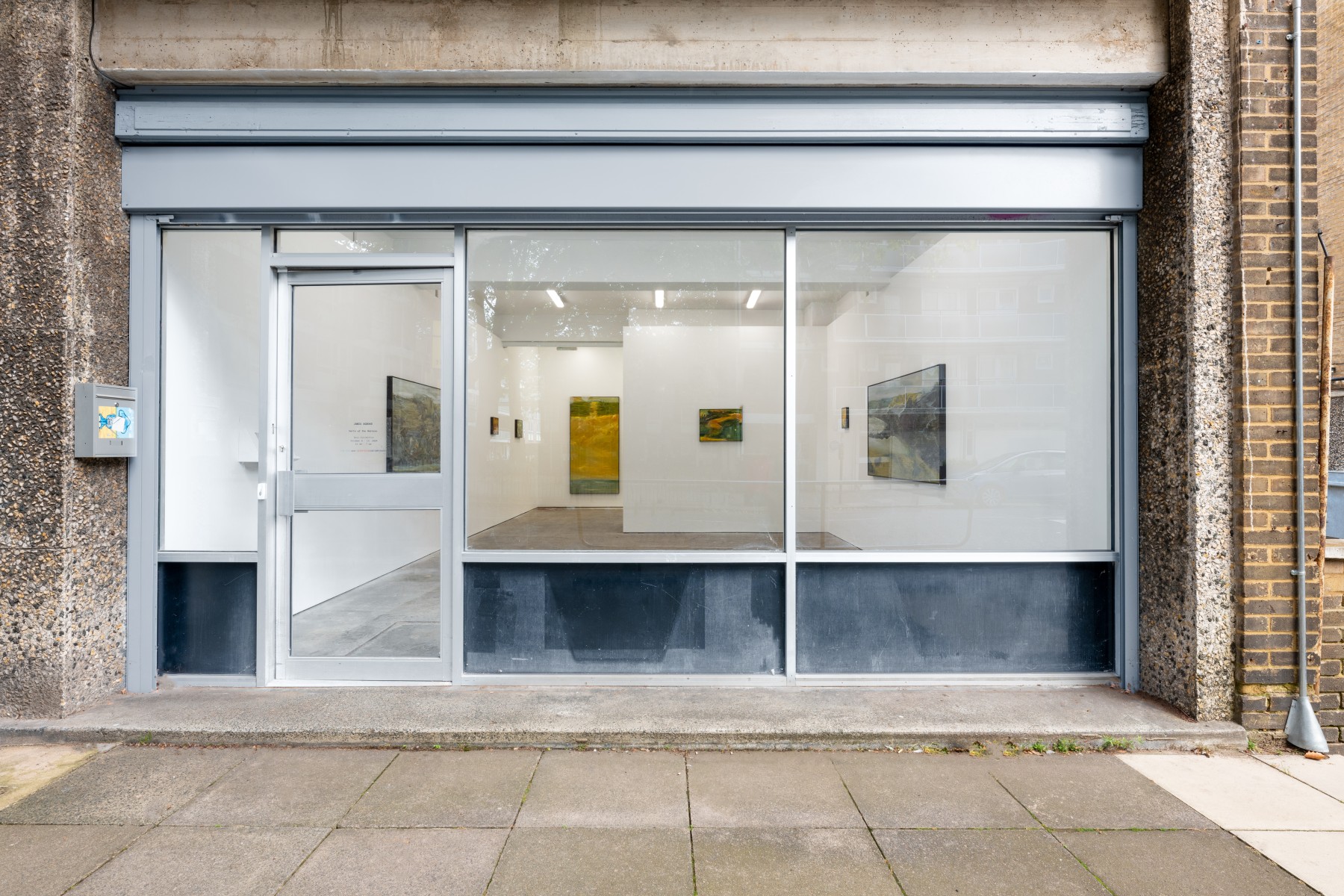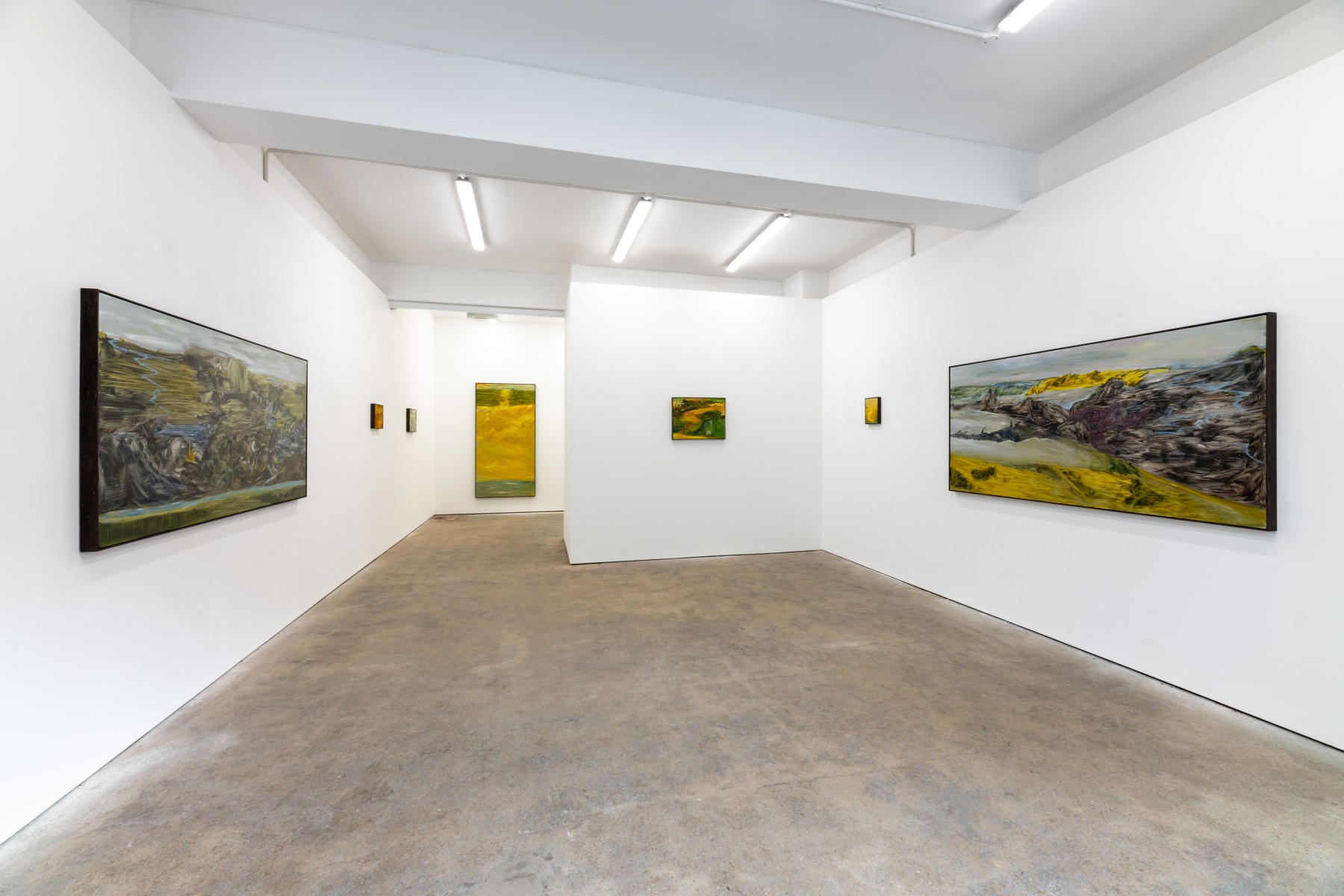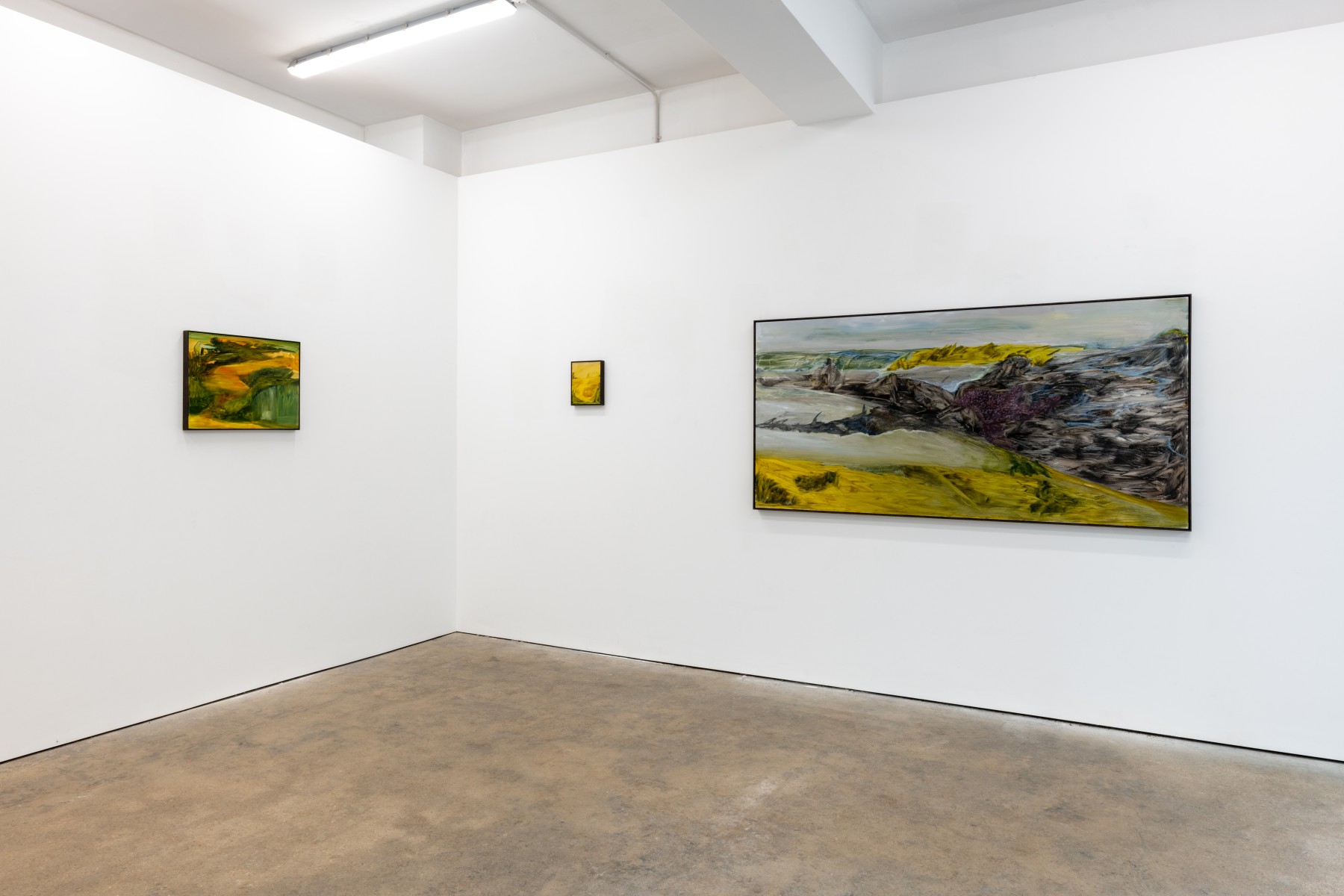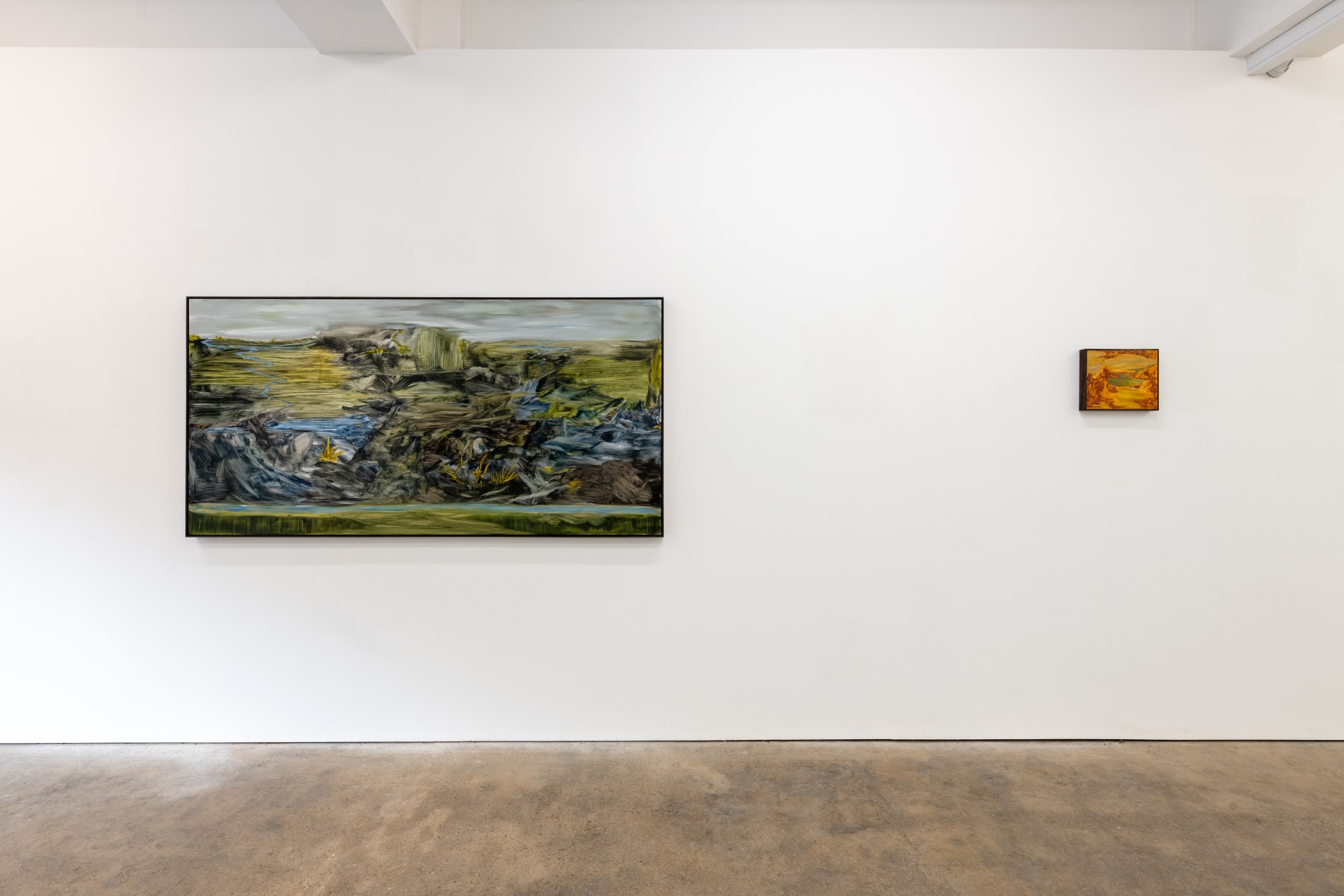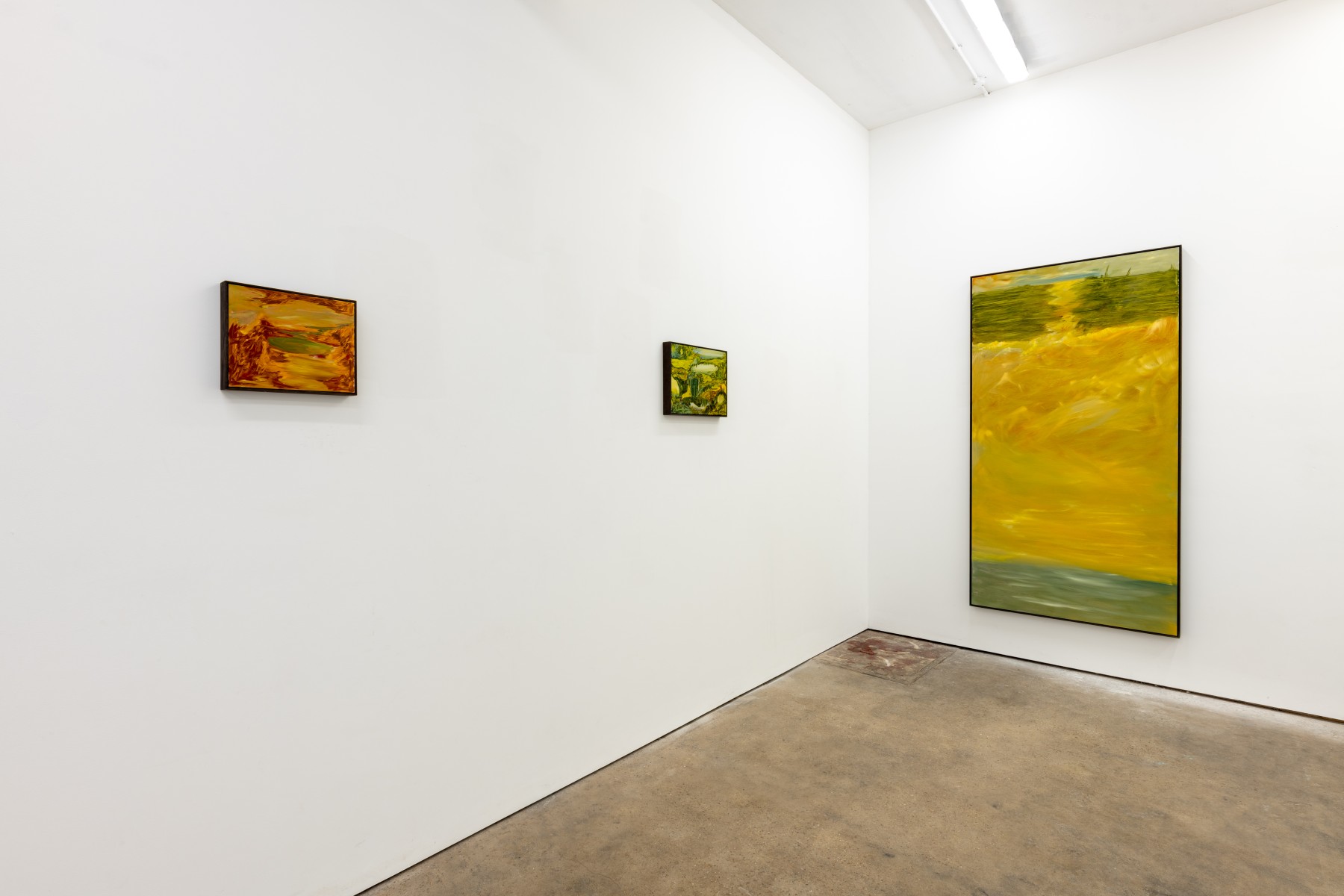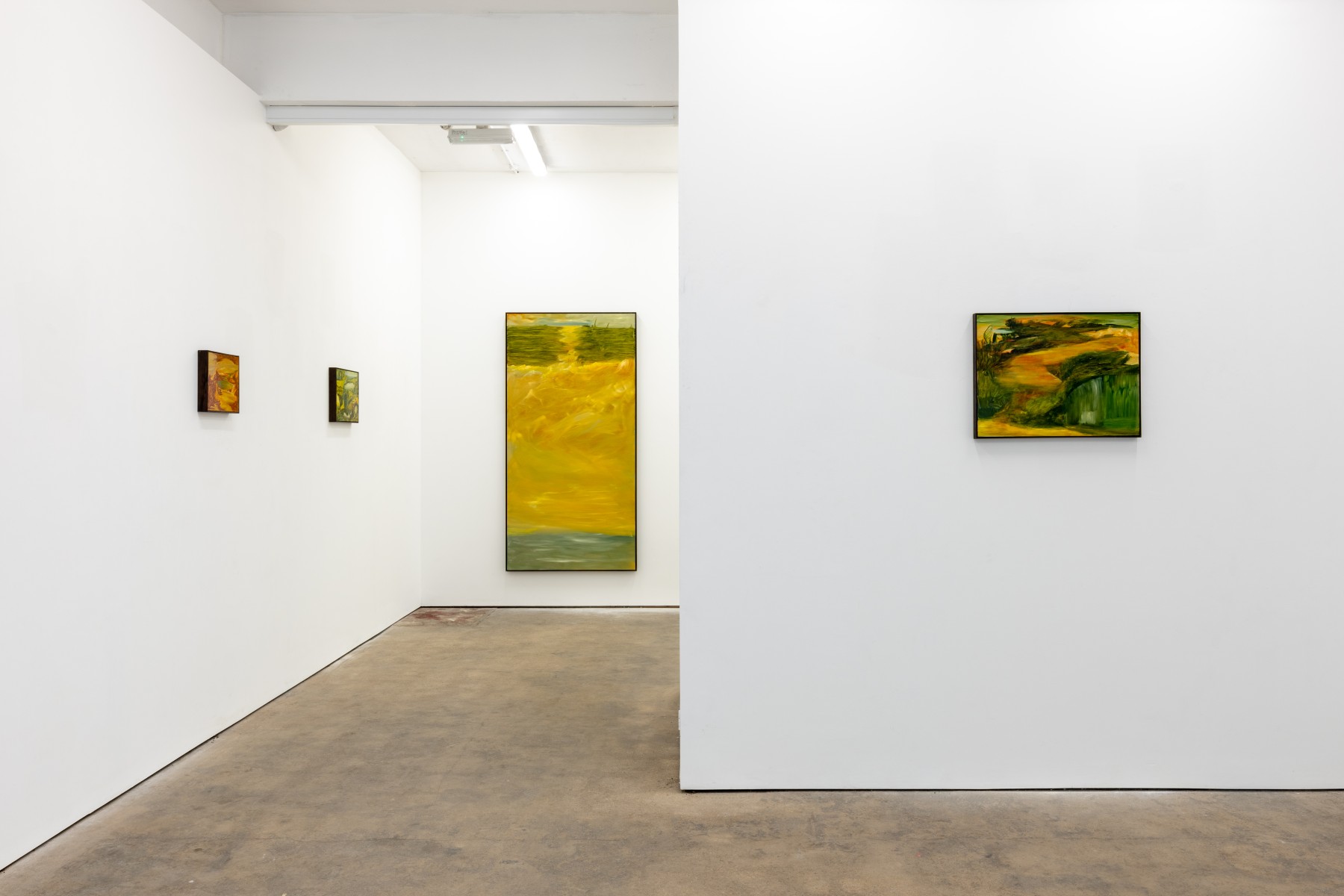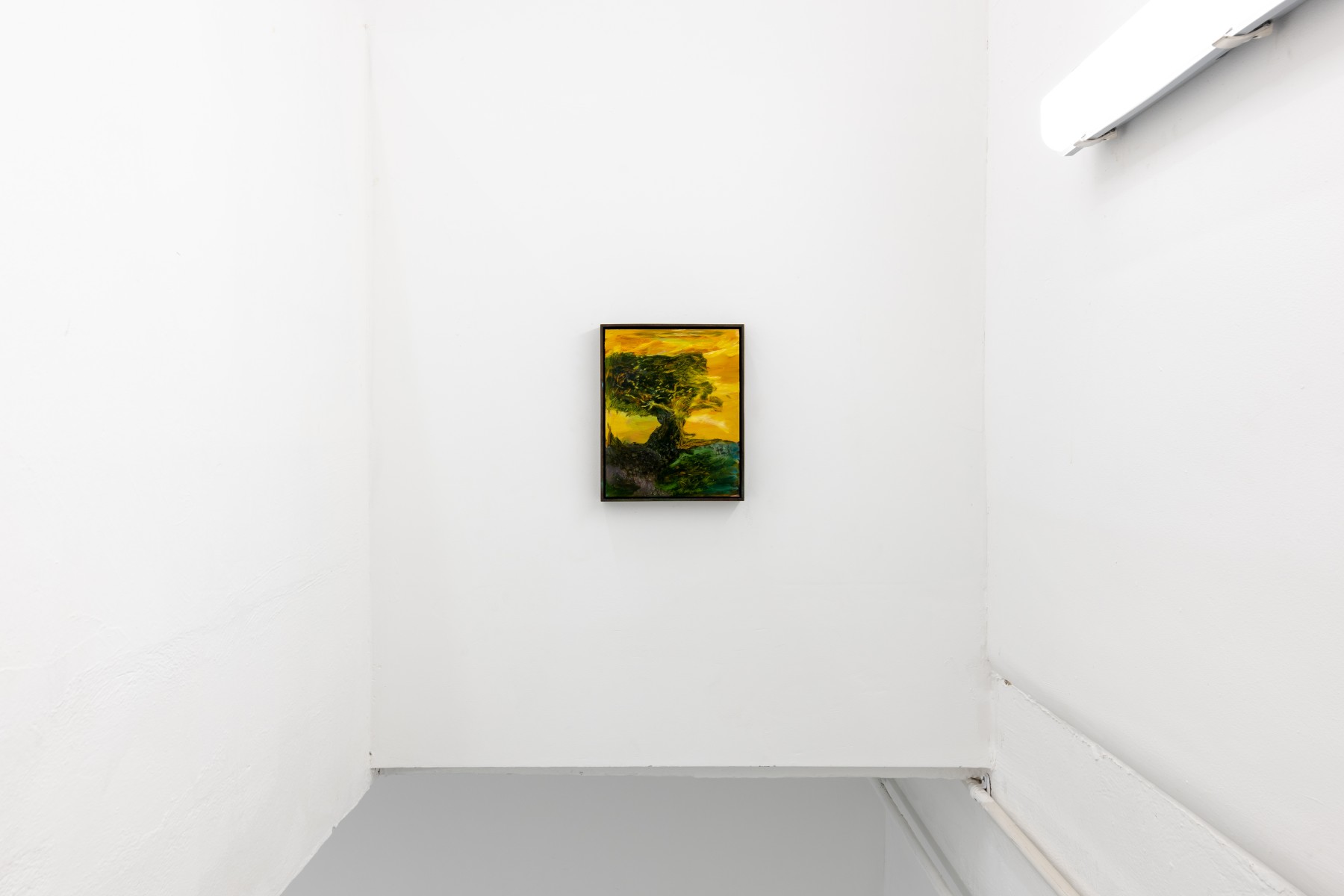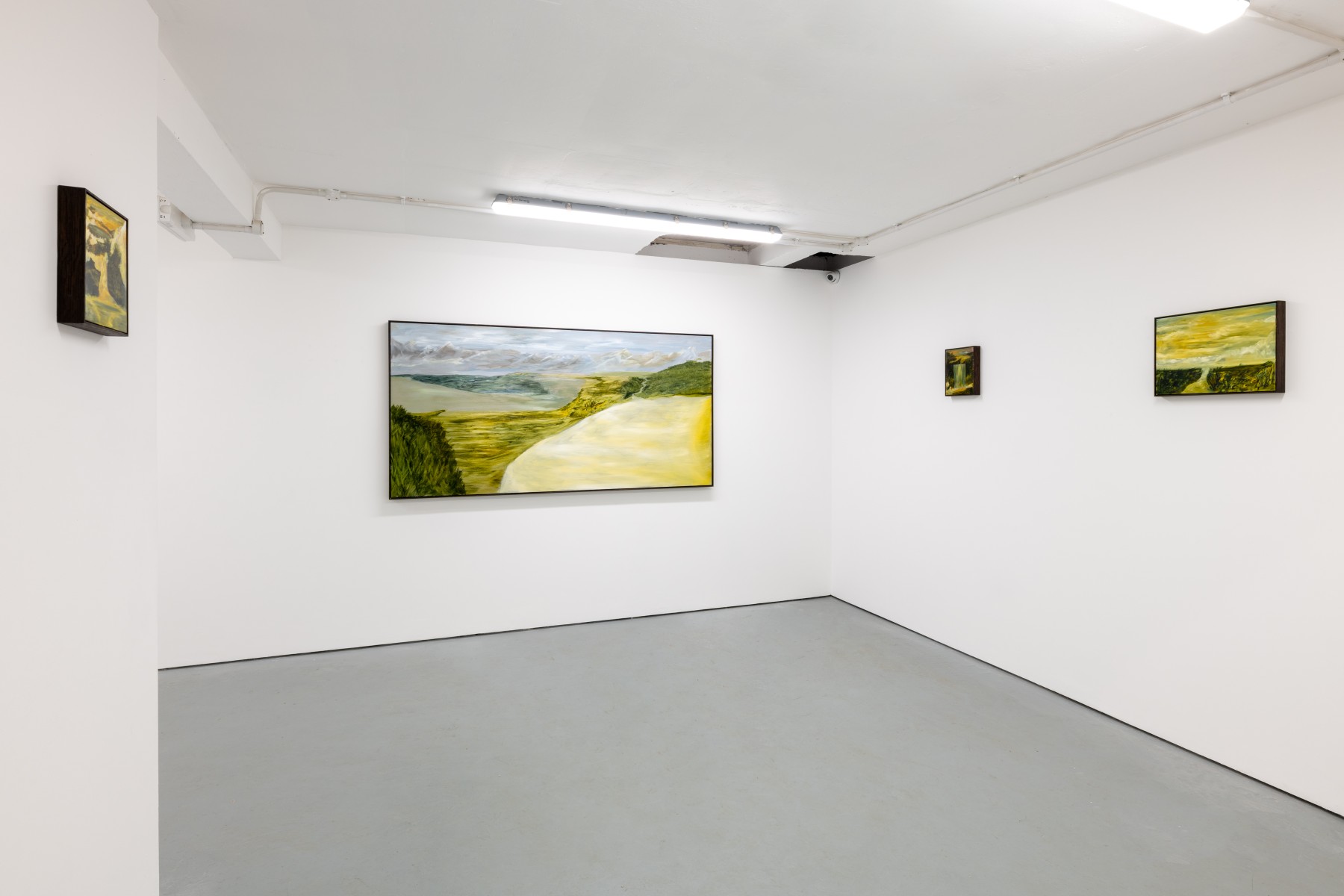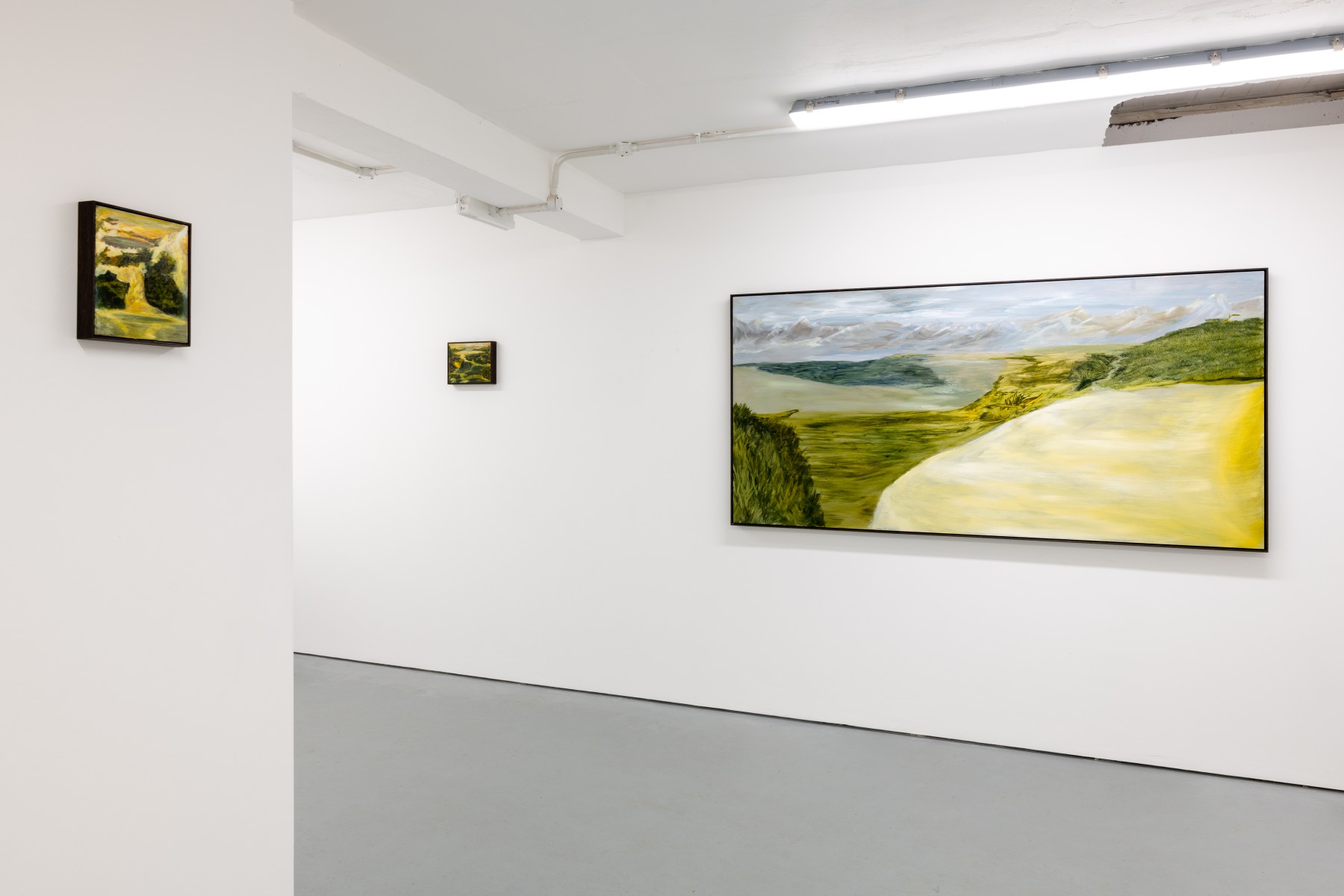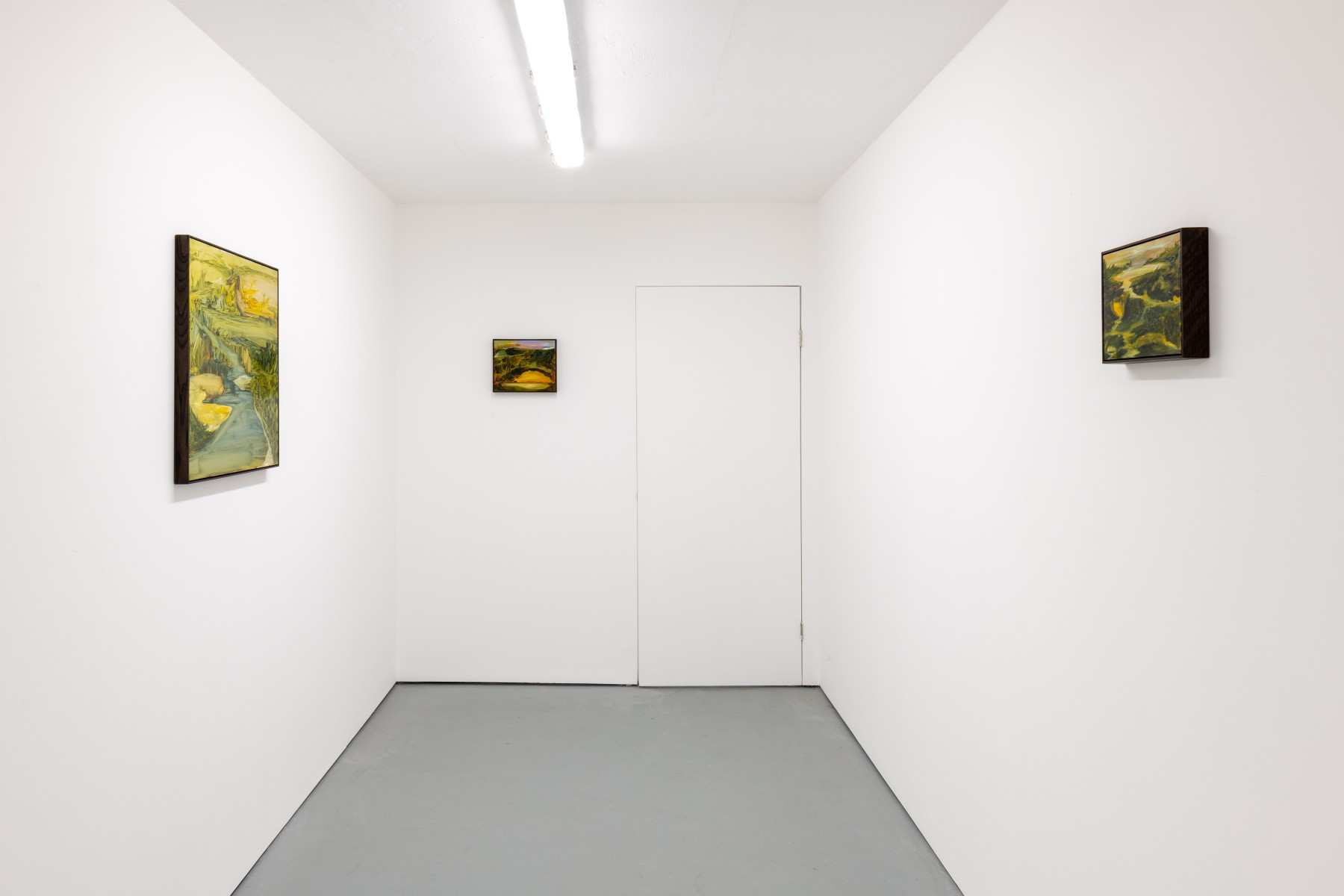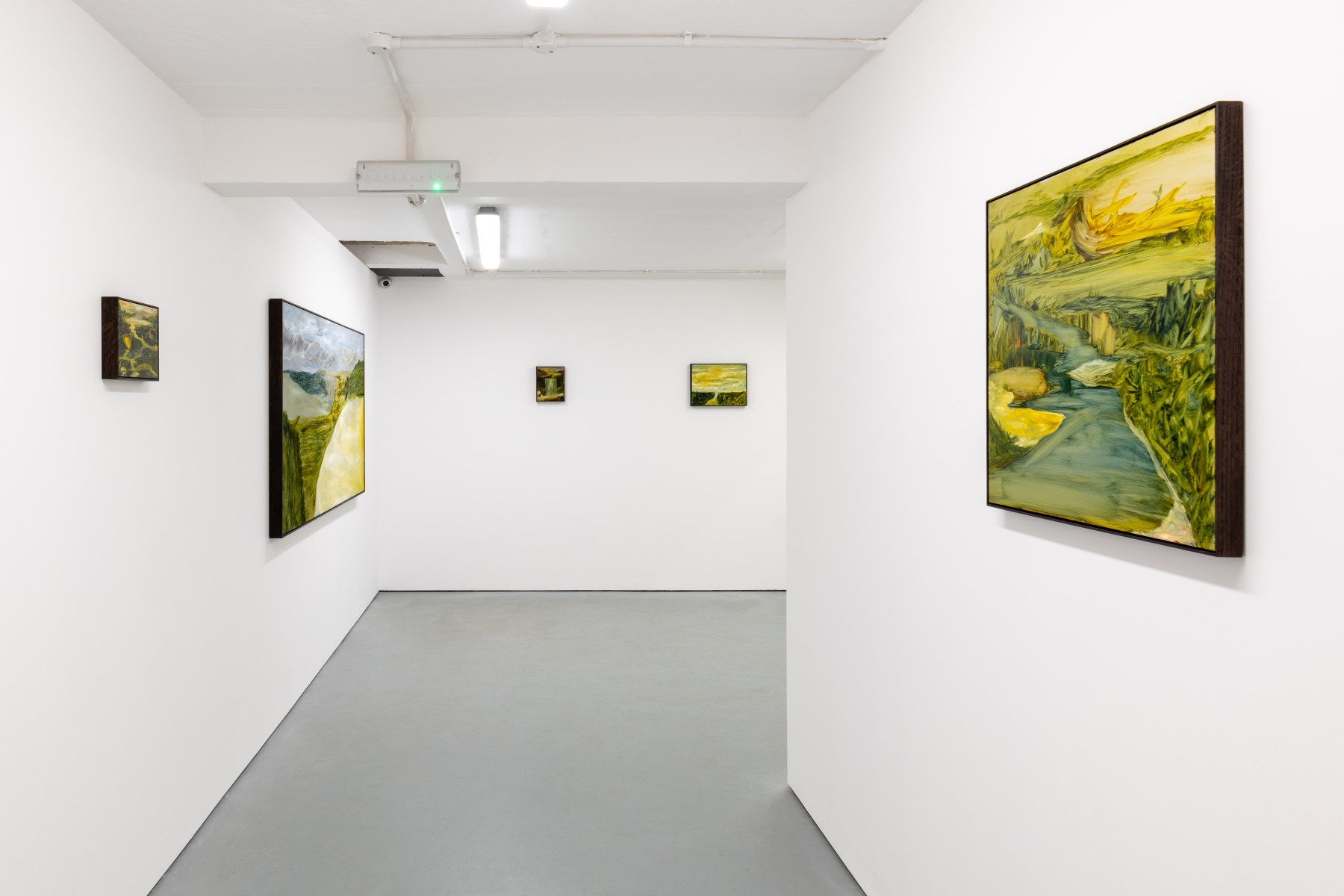Jamiu Agboke - Veils of the Horizon
Inauguration: Monday October 7, 2024, 11 am – 11 pm
Duration: October 8 – 13, 2024, 11 am - 7 pm
Location: 96 Robert St., NW1 3QP, London, UK
In Jamiu Agboke’s universe of forms, transience is the governing principle. Veils of the Horizon is a series of paintings concerned with shadows over hard objects, traces of past presences, and gleaming residues. As landscape studies, these oils on copper and aluminium, framed in an earthy stained oak, detail the transformations of the natural world at extremities of heat and texture; as abstract experiments on a hostile surface, they become expressive arenas of energetic mark-making that transform the way we see space and place beyond the city walls. Conversant with the rich histories of the English landscape tradition, Agboke renews that tradition for our moment. As in the age of J. M. W. Turner and John Constable, who each reckoned in their own distinct surfaces with the ways in which the industrial and agricultural revolutions wrought disfigurements and revelations on the land, Agboke sees our time––or something close to our time, perhaps a near future––as one of radical transformation which refuses to be recollected in tranquillity. Spending time with these vigorous works, we see the traditional format of the landscape painting revolutionised by a force both unfamiliar and yet achingly historical. Above all, Agboke’s fiercely dynamic brushstrokes are tempered by a singular approach to close looking at the world.
Take, for instance, Shifting Light (2024) and begin by scrutinising its proportions: at 201 x 103 cm (at a ratio of nearly 2:1) this work feels, instinctively, as though it cannot be a landscape. With its obstinately vertical orientation and half suggestion of a horizon line merely separating a thin sliver of teal blues for the heavens, pink cumulus clouds, and spiked promontories from the vastness of space below, we encounter an elemental world of Agboke’s own, adhering to a unique spatial logic. I cannot help but be seduced by the thickly built-up vortex of burning yellows and enflamed orange browns that dominate the centre ground, like an explosion or a combustion, like a source of vital energy from the depths and the black. The muscular brushstrokes of Shifting Light summon up the lighter, swirling experiments––those near abstractions, painterly and cavernous––of the late Turner, such as the spiralling Light and Colour (Goethe’s Theory) - the Morning after the Deluge - Moses Writing the Book of Genesis (exhibited 1843), in which sublime elements and overwhelming suggestions of light and scale overpower those smaller forms of life associated with the human figure.
For this writer at least, the expansive space below that thin sliver of half-sky is reminiscent of those views of Delft by Johannes Vermeer, in which the muddy river water of the provincial town drifts below modest buildings on what feels like a day when nothing seems to happen; and yet, if we peer closer, reorientate our perspective, and transform our habitual ways of looking, everything seems to be happening all at once. If not in subject matter, then, but in the artist’s treatment of the neglected and the revelatory, the magnificent and the mundane, and the place of heaven and of dirt, all held together in a single composition, Agboke’s painting speak to the writings of Dutch philosopher and pantheist Baruch Spinoza, born in 1632, the same year as Vermeer. It is not surprising that Agboke finds in Spinoza’s thought something akin to his own understanding of the world and the possibility for divine revelation in all things. ‘Only that thing is free which exists by the necessities of its own nature’, Spinoza wrote: ‘and is determined in its actions by itself alone.’ Agboke’s paintings are like this: they bear the traces of determined action and force of will, to be sure, and are marked by their own free nature.
In other paintings on display, such as the eponymous Veils of the Horizon and Purple Field (both 2024), we encounter an altogether different kind of terrain; these paintings seem to dig deep into the earth as opposed to affix their perspective skyward. While technically identical dimensions to Shifting Light, the orientation of these works are flipped into the conventional format for landscape; the effect is to create a real sense of depth, as though we are bearing witness to the stratification of time stretched out all the way to the abstracted horizon line. We might suspect a feint zigzag of a tributary of water, or the knife-edged frontage of a crag-side, or even the persevering vegetation in a hostile climate that litter the foreground, but this is not a world that we know but fragments of sight and sense guided by a mysterious exterior logic. Perhaps surprisingly, Agboke cites Pierre Bonnard as an influence on his work: ‘it is his intensity and attention to subject matter which moves me: his ability to combine both the sensorial nature of the subject and technique to give rise to a great picture.’ But, without doubt, the greatest influence on this body of work is Rembrandt Harmensz van Rijn who, in the period between 1627 to 1665, produced at least 314 copper plates to create etchings. The Dutch master made the etchings by, first, coating a copper plate with a mixture of resin and beeswax, before using a needle to make marks into the wax and thus revealing the copper surface. Like Rembrandt, Agboke’s treatment of the oils on the surface is tough and unforgiving and it is this treatment which bleeds into his approach to subject matter and the landscape tradition. Agboke had to take risks in the moment: painting on copper and aluminium, the artist could not change his mind as one can on canvas, but had to intuitively make his mark and respond, quickly and purposefully, to further his composition. There could be no mistakes or, more accurately, any mistakes had to be made right in a flash.
Agboke’s new series of works are clearly made by an artist in complete command of his talents. It is not for nothing, then, that an inquisitive viewer would surely see in these new paintings––given their material experiment, and their uncompromising commitment to change the texture of the world’s surface in oil––a metamorphosed sensibility from the artist’s works made only a year ago, and one almost unrecognisable from the one a year before that. While sharing something with the attention that we find in his unique reworkings of landscape in these new works, Agboke made paintings in 2022 that featured figures lost within them: translucent bathers, a child’s bicycle with flag flapping in the wind, an intrepid wander in wellington boots trudging through marshland. A year later, he vacated those idle and vagrant figures and turned to the empty country landscapes of wild undergrowth and untilled field, often brilliantly envisioned in soft amber light. Restless and uncompromising, he has transformed his practice once again. This time, the change is primarily material: ‘an artist’s development should never be linear’, Agboke told me: ‘the transformation is the shift from canvas to copper and aluminium.’
As Agboke traces this shift in medium, he uses the material form to find his subject. In Whispers of Heat (2024), the viewer is exposed to an extraordinary velocity of temperature: the volcanic reds and enflamed bursts of combustible oranges compete for space while an island of acid green, inexplicably staged as though on a pedestal, lingers in the centre ground like an impossible horizon. Ever attentive to his materials, and to the capacity for individual forms to emerge by being held in dynamic balance within a larger compositional field, the artist demonstrates his gifts as a draughtsman. After graduating from the Royal Drawing School in 2022, Agboke has demonstrated a striking ability to construct lines which manage to add gravity and take it away in the same picture even, or especially, as those lines blur and coalesce into adjacent spaces. ‘Due to the volume of drawings and works on paper we were producing I felt as though our brains got used to solving problems quicker’, Agboke reflects on what he learnt at the Royal Drawing School: ‘For example what colours were disrupting the image and if one needs to push it back or pull it forward for the painting to work… we [the students] got a better understanding of space and composition.’
It is not by coincidence that so many of Agboke’s titles reference movement through and between landscapes, often with the suggestion of trial, tribulation, or overcoming some kind of obstacle: solved by walking, fugitive terrain, gleaming residue, and, explicitly, pissing waterfall. These are all indicative of the artist’s obstinate itinerancy as a walker, runner, and cyclist, predominantly through London’s open and green spaces: Burgess Park, Hackney Downs, London Fields. Observing while in motion, Agboke commits to memory the ways that space conceals and reveals as one moves through it: to stand on the heath and contemplate for hours the changing atmosphere of diurnal light between and through tree branches is an altogether different experience to sprinting through an open terrain. You notice things differently when you cannot study them. Visually, Agboke’s paintings resemble much more the latter category but manage, against themselves, to feel contemplative and reflective. More than that, for any keen observer of his work, they demand those responses in us as we encounter them: we contemplate and reflect upon their generous possibilities. While many of these works may have been inspired by running through urban enclosures for recreation, some feel distinctly imagined, and even imaginary: Pissing Waterfall (2024) depicts a radioactive cascade of impossible green, while Oak Tree (2024) is a painting that recalls the arboreal fantasies of the German Symbolists. The tree, alone in the field, appears ravaged by a west wind that has pared back the branches against the mesmeric golden light. It is striking that it is exactly in those moments when Agboke’s work appears to be the most traditional––in this case: the pastoral image of the solitary tree, and by extension of nature’s self-assured dignity––that it reveals itself to be entirely consistent with contemporary expectations of landscape. In those moments, one realises how hard the artist pushes the handle of contemporary landscape even further.
In terms of its dense brushstrokes and heaving residues of gesture, Agboke’s oak tree might recollect those conifers which populated Frank Auerbach’s studies of Primrose Hill of the mid-1980s, for instance, or even closer to our time but looking further back to arboreal history, in Doron Landberg’s Yokneam (2021), a depiction of an archaeological site in northern Israel. But there is something subtly universal and not explicitly particular here. One does not for one minute believe Agboke is painting a single tree with the luxury of the Sunday painter en plein air on his side: his oak tree, like so many of his landscapes, is a fierce and impassioned depiction of a fleeting memory, or a memory fused with thought and dispersed information, and much less a depiction of a static and sealed subject matter. In this way, there is something fantastical and strange at work in Agboke’s landscapes: in their phantasmagorical palette, they half resemble the polychromatic visions of Neo Rauch’s unreal Leipzig; in the way arching lines of paint suggest both human life and an inhospitable environment, I see dashes of Tala Madani’s sites of memory. While Agboke might recall details from golden periods of art history, as well as contemporary painting, he is a singular artist whose work disavows neat categorisation. In Agboke we find a restless artist who refuses to sit comfortably with the world around him, nor allow that world to be transposed into art with blind faithfulness: these are landscapes of sublime terror and sumptuous revelation in the same stroke. They ask us to see the world askance, like all those great artists who see doubt as a truer metric than certainty to construct their world in paint.
- Matthew James Holman, 2024
